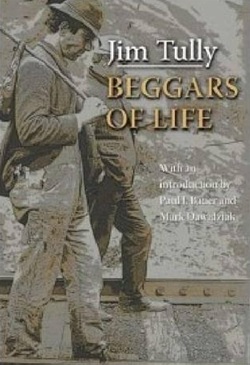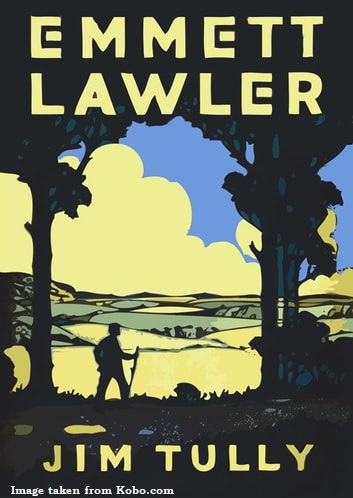Born: June 3, 1886
Died: June 22, 1947
Ohio connection: Birth
St. Mary’s
Jim Tully was a colorful character, boxer, and American writer has been described as a “hobo novelist.” He achieved both critical and commercial success during the 1920s and 1930s, and Tully biographers Paul J. Bauer and Mark Dawidziak described him as “the greatest long shot in American literature.”
Tully was born near St. Marys in western Ohio to James Dennis and Bridget Marie Lawler Tully, an Irish immigrant ditch-digger and his wife. His family was poor, but his childhood was relatively happy until the death of his mother in 1892. Unable to care for him, his father sent young Tully to an orphanage in Cincinnati where he remained for six years. After running away, his education from that point was acquired in the hobo camps, boxcars, railroad yards, and public libraries where he ended up. When he finally tired of life on the road, Tully found himself in Kent, Ohio, where he found work as a chain maker, professional boxer, and tree surgeon. At this time, he also began to write, mostly poetry published in the local newspapers.
In 1912, Tully moved to Hollywood when he began writing in earnest. Tully became one of the first reporters to cover Hollywood as a freelance writer, which meant he was not reined in by the studios. He wrote about Hollywood celebrities including Charlie Chaplin, for whom he had worked; however, the stars did not always find his portrayal of them agreeable. For these pieces, rather tame by current standards, he became known as “the most-hated man in Hollywood” — a title he greatly enjoyed. The work that was closer to his heart, however, were the books he wrote about his years on the road and about the underclass of American society. Tully also wrote a warm-hearted memoir about his childhood with his large Irish family, as well as a travel book and novels featuring prostitution, boxing, and Hollywood. His book Beggars of Life was made into a film and his Shanty Irish into a play.
Although some of Tully’s more graphic works did not sit well with the censors, those books provided him with both commercial success and critical acclaim from, among others, H.L. Mencken, George Jean Nathan, and Rupert Hughes. Tully has been credited with ushering in a school of “hard-boiled writing” that was continued by Ernest Hemingway and others.
Jim Tully died June 22, 1947.
Additional Resources
See also the Jim Tully article on Wikipedia for a bibliography of his work
Finding Aid for Jim Tully Papers at the Online Archive of California (PDF)
Jim Tully: American Writer, Irish Rover, Hollywood Brawler by Paul Bauer and Mark Dawidziak with a foreword by Ken Burns (Kent State University Press, 2011) (Check library holdings via WorldCat)
How Mansfield Launched Jim Tully into Literary History (Richland County History blog, 2019)
A Better Book There Never Was: Jim Tully’s “Shanty Irish” (Buckeye Muse blog posting, 2018)




